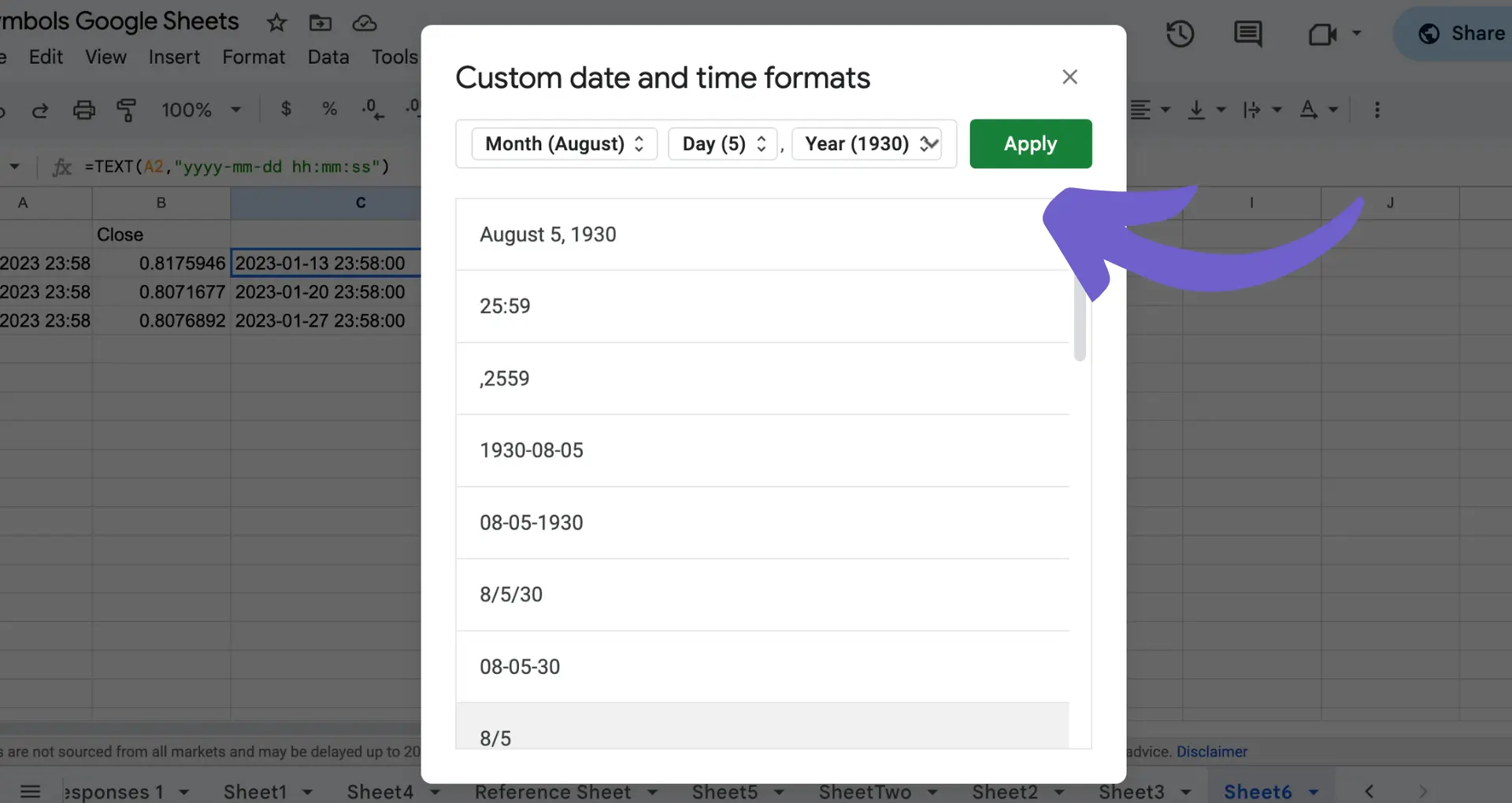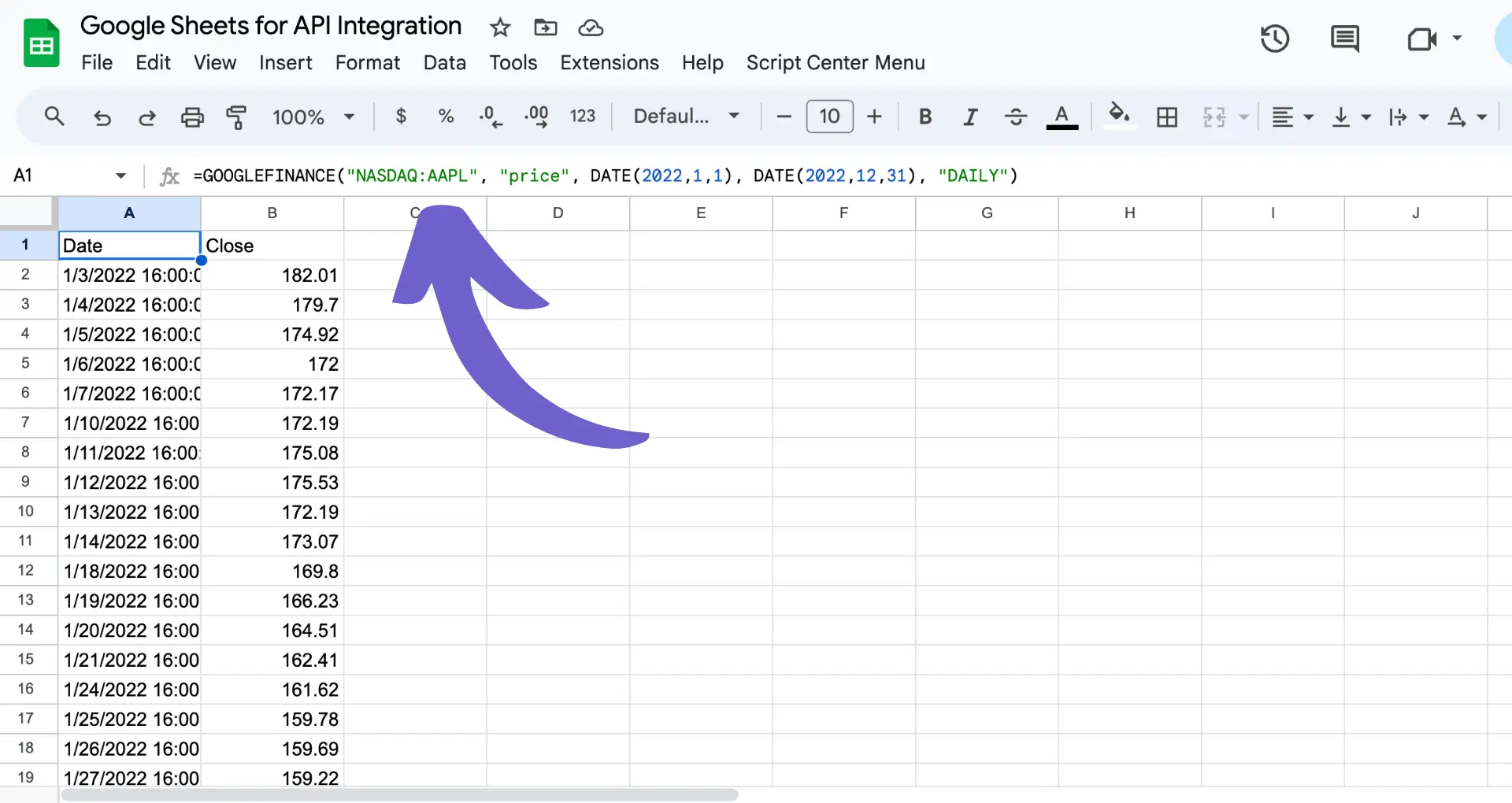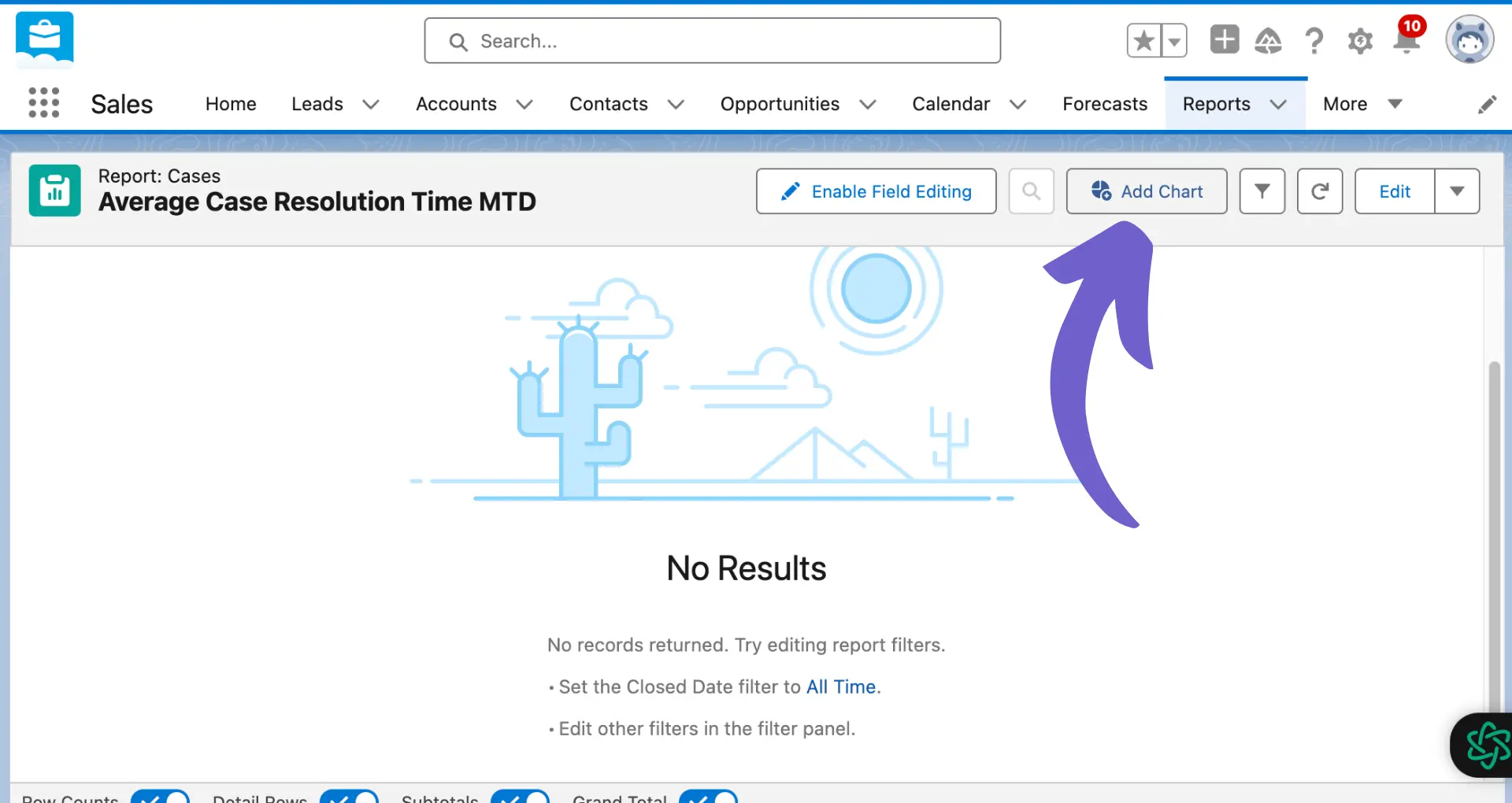





Use DATEVALUE to convert text to dates in Google Sheets.
By the way, we're Bardeen, we build a free AI Agent for doing repetitive tasks.
If you're dealing with data, you might love Bardeen's GPT in Spreadsheets. It automates text-to-date conversion and more, saving you time.
Converting text to dates in Google Sheets is a common task that can be tricky if you're not familiar with the available tools and functions. In this step-by-step guide, we'll walk you through various methods to accurately convert text entries into proper date formats. By the end of this guide, you'll be able to efficiently manage and analyze your date-related data in Google Sheets.
Google Sheets supports various data types, including text, numbers, and dates. Understanding the differences between these data types is essential for accurate data analysis and manipulation. Text data is used for non-numeric information, such as names or descriptions, while date data represents specific points in time.
Common scenarios where text might be mistakenly input or imported as dates include:
When text is incorrectly recognized as a date, it can lead to issues such as:
Bardeen can automate the process of extracting text from various sources and saving it correctly to Google Sheets, ensuring the text is not mistaken for dates. Try these playbooks:
To ensure data integrity and avoid these problems, it's crucial to properly convert text to date format in Google Sheets. For additional efficiency, consider using GPT for Google Sheets to streamline your workflow.

The DATEVALUE function in Google Sheets is a powerful tool for converting text strings representing dates into actual date values. The syntax for using the DATEVALUE function is as follows:
DATEVALUE(date_string)
To use the DATEVALUE function, follow these steps:

For example:
Bardeen can automate repetitive data entry and formatting tasks in Google Sheets, saving you time. If you frequently convert date strings using DATEVALUE, try these playbooks to extract data from various sources and save it to Google Sheets in a structured format:

Save time with Bardeen by connecting Google Sheets to automate data parsing. Let Bardeen handle repetitive tasks and focus on what matters.
If the date string is not in a recognized format, the DATEVALUE function will return a #VALUE! error. To avoid this, ensure that the date string is in a valid format or use additional functions like integrate Google Sheets with other tools to parse the string correctly.
Keep in mind that the recognized date formats may depend on your locale and language settings in Google Sheets. If you encounter issues, double-check your settings and adjust the date string format accordingly.
After converting text to dates using the DATEVALUE function, you may need to format the cells to display the dates in a recognizable format. Here's how to change cell formatting in Google Sheets:

If the predefined date formats don't meet your needs, you can create a custom date format:
Once you have your dates formatted correctly in Google Sheets, you can use Bardeen to automate copying that data to other sheets or apps, ensuring it stays up-to-date everywhere:
Remember that changing the cell formatting only affects how the dates are displayed, not the underlying date values. This means you can still perform calculations and comparisons on the formatted dates as needed. For more advanced uses, you might want to integrate Google Drive with other apps to automate your workflow.
When dealing with complex or non-standard text date formats, you can combine functions like SPLIT, MID, and DATE to convert them into usable date values in Google Sheets. These formulas allow you to extract specific parts of the text and rearrange them into a proper date format.
For example, if you have a date in the format "YYYY-MM-DD" in cell A1, you can use this formula to convert it:
=DATE(LEFT(A1,4),MID(A1,6,2),RIGHT(A1,2))
This formula breaks down the text into year, month, and day components using LEFT, MID, and RIGHT functions, then passes those values to the DATE function to create a valid date.
Similarly, for a date in the format "DD/MM/YYYY" in cell A2, you can use:
=DATE(RIGHT(A2,4),MID(A2,4,2),LEFT(A2,2))
Bardeen can automate these formulas for you, saving time and effort. Try these playbooks to streamline your text to date conversion process:

By modifying these formulas to match your specific text date format, you can create custom solutions for converting them into proper dates. Some other useful functions for advanced text to date conversions include:
Remember to adjust cell formatting to display the converted dates in your desired format for better readability. For more advanced solutions, consider using GPT in Spreadsheets to automate tedious tasks.
Bardeen playbooks can also help qualify leads and copy email data into your Google Sheets, further enhancing your productivity:
Save time by letting Bardeen automate these formulas. Connect Microsoft Excel for faster workflows without manual effort.
When converting text to dates in Google Sheets, users may encounter various issues that lead to incorrect or unexpected results. Some of the most common problems include:
Bardeen can help streamline the process of consolidating data from various sources into Google Sheets for troubleshooting date formatting issues. Try these playbooks to quickly export contacts from your CRM:
To troubleshoot and correct these issues:
Once you have your data in Google Sheets, you can use Bardeen to enrich it with additional context and find relevant email addresses, making it easier to identify and resolve date conversion issues:
By following these best practices and troubleshooting steps, users can ensure accurate date conversions and avoid common pitfalls when working with text-based dates in Google Sheets. For more advanced tasks, consider using GPT in Spreadsheets to automate your workflow.
For those working with large datasets or needing to convert text to dates frequently, manually applying functions and formatting can be time-consuming and prone to errors. This is where Google Apps Script comes in handy, allowing users to automate repetitive tasks like converting text to dates across entire datasets. Automating these tasks can save significant time.
Google Apps Script is a powerful tool that enables users to write custom scripts to extend the functionality of Google Sheets and other Google apps. By creating a script that automatically converts text to dates, you can save time and ensure consistency in your data.
Here's a basic example of a Google Apps Script that automates the text-to-date conversion process:
function convertTextToDates() { var sheet = SpreadsheetApp.getActiveSheet(); var range = sheet.getDataRange(); var values = range.getValues(); for (var i = 0; i < values.length; i++) { for (var j = 0; j < values[i].length; j++) { var cellValue = values[i][j]; if (typeof cellValue === 'string') { var dateValue = new Date(cellValue); if (!isNaN(dateValue.getTime())) { sheet.getRange(i+1, j+1).setValue(dateValue); } } } } }
To use this script:

The script will loop through each cell in the selected range, check if the cell contains a text string that can be converted to a date, and replace the text with the corresponding date value. This automation saves you the effort of manually converting each cell and ensures all text dates are consistently converted. Consider using Bardeen's AI Web Scraper for more advanced automation needs.
Want to save more time? Use Bardeen's playbook to automate LinkedIn profile enrichment in Google Sheets. It simplifies lead generation by combining data from LinkedIn and Google Sheets.










SOC 2 Type II, GDPR and CASA Tier 2 and 3 certified — so you can automate with confidence at any scale.
Bardeen is an automation and workflow platform designed to help GTM teams eliminate manual tasks and streamline processes. It connects and integrates with your favorite tools, enabling you to automate repetitive workflows, manage data across systems, and enhance collaboration.
Bardeen acts as a bridge to enhance and automate workflows. It can reduce your reliance on tools focused on data entry and CRM updating, lead generation and outreach, reporting and analytics, and communication and follow-ups.
Bardeen is ideal for GTM teams across various roles including Sales (SDRs, AEs), Customer Success (CSMs), Revenue Operations, Sales Engineering, and Sales Leadership.
Bardeen integrates broadly with CRMs, communication platforms, lead generation tools, project and task management tools, and customer success tools. These integrations connect workflows and ensure data flows smoothly across systems.
Bardeen supports a wide variety of use cases across different teams, such as:
Sales: Automating lead discovery, enrichment and outreach sequences. Tracking account activity and nurturing target accounts.
Customer Success: Preparing for customer meetings, analyzing engagement metrics, and managing renewals.
Revenue Operations: Monitoring lead status, ensuring data accuracy, and generating detailed activity summaries.
Sales Leadership: Creating competitive analysis reports, monitoring pipeline health, and generating daily/weekly team performance summaries.